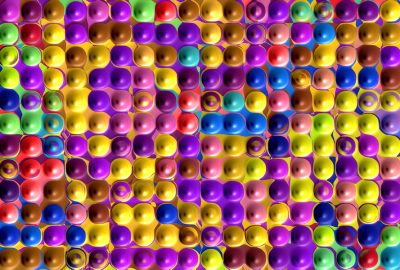Focusing on white paper readability is critical because the information you’re planning to put in your white paper is valuable to the people who will read it. After all, that’s why you’re developing a white paper in the first place. So be sure they can actually read it.
Unlike advertising and brochures, white papers shouldn’t be designed with a strong “sell” message. They do help companies make sales, but they do it by being informative instead of flat-out promotional. The most effective white papers are simply set up to look like trade magazine articles with fewer pictures.
One common mistake designers (especially young designers) make when preparing white papers is forgetting that many of the people who will read them are old enough to wear bifocals. So they use small type, odd colors, reverse type, and other techniques that work just find for twentysomethings, but that render white papers unreadable for anyone who’s made it to their mid-forties. How can make sure more mature readers will be able to take in what you’ve worked so hard to create?
Improving white paper readability with type choices
Many designers jump at the opportunity to use the latest and most fashionable typefaces (fonts). But the most readable typefaces tend to be some of the most familiar, particularly when used in body copy. Serif faces like Times, Palatino, Century, Garamond and Goudy may seem ho-hum to young designers, but they’re much easier on the eye, especially in long text.
Selecting type size and leading for white paper readability
Think twice before going with anything smaller than 10-point type. In most typefaces, 11-point body text works just fine. Another way to enhance readability is to increase the leading (spacing) between lines of text. Using leading that’s at least 25 percent more than type size (for example, 11-on-14) can do wonders.
Visual cues that enhance white paper readability
Indenting paragraphs may seem boringly old-fashioned to some designers, but older readers have read that way since childhood. Use subheads, bold lead-ins, bullet points, and similar devices to guide the reader’s eyes and make the hierarchy of information clearer.
Reverse type can erode white paper readability
Reversing type (i.e., light type on a dark background) can be visually striking, but it’s effective only when it’s readable. Generally, it’s a good idea to increase the type size by a point or so. And while serif type is normally more readable, san serif typefaces tend to provide better results when reversed.
Color contrasts improve white paper readability
Make sure the type and the background have enough contrast so it’s readable. In addition, when placing two colors side-by-side, watch the contrast, too. As people age, their eyes are less able to perceive subtle differences in color. And certain colors – such as very pale yellow or pink – may actually appear to be white to older eyes, so a light yellow screen on a dull white paper stock may not even be noticed.
White space benefits white paper readability
White space is a good thing when designing for older readers. Not only does healthy use of white space keep information organized and presentable, it can reduce visual fatigue. Trust your designer and resist the urge to fill that white space with more text, logos, or other images.


